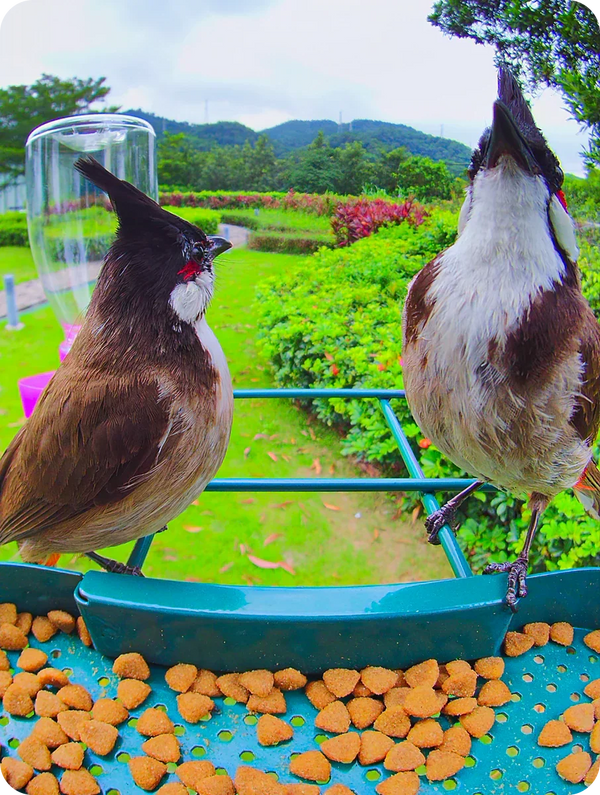Discover the Secret Birds Can't Resist: Unleash the Magic of Suet Feeders!
Suet feeders are a wonderful addition to any backyard, providing a vital source of nutrition for birds, especially during the colder months when food is scarce. Suet, a high-energy food made from animal fat, is particularly appealing to a variety of bird species, making these feeders a perfect tool for attracting feathered friends. Whether you're an experienced birdwatcher or just starting out, understanding the allure of suet feeder birds can transform your backyard into a vibrant sanctuary for birds. In this article, we will explore the types of birds that flock to suet feeders and share tips on how to attract them to your yard.

Understanding Suet Feeders
Suet feeders are specially designed to hold suet cakes or blocks, which are typically made from rendered animal fat mixed with seeds, fruits, and nuts. These feeders come in various styles, including mesh, cage, or even log-type feeders that allow birds to cling to the surface while they snack. Suet is rich in fats and proteins, making it an excellent energy source for birds, particularly during winter months when their usual food sources are limited. By providing suet, you not only help sustain local bird populations but also attract a diverse array of species that may not visit traditional seed feeders. The right setup can turn your yard into a birdwatching haven.
Bird Species Attracted to Suet Feeders
Many bird species are drawn to suet feeders, each with unique feeding habits and preferences. Among the most common visitors are woodpeckers, chickadees, and nuthatches, but the list extends far beyond these familiar faces. Woodpeckers are particularly fond of suet, using their strong beaks to chip away at the cakes. Chickadees and nuthatches, on the other hand, are smaller birds that prefer to take pieces of suet to hide and eat in nearby trees. In addition to these, you might also see starlings, blue jays, and even wrens at your suet feeder. Each of these birds brings their own charm and personality, creating an engaging birdwatching experience right in your backyard.
Common Woodpeckers
Woodpeckers are among the most enthusiastic suet eaters. The Downy Woodpecker, for instance, is a frequent visitor to suet feeders, recognizable by its small size and distinctive black-and-white plumage. These birds can be seen clinging to the feeder, tapping away at the suet with their strong beaks. The Hairy Woodpecker and the larger Pileated Woodpecker are also common visitors, each with their own unique sounds and behaviors. Watching woodpeckers at the feeder is not only enjoyable but provides insights into their fascinating feeding techniques and social interactions.
Chickadees and Nuthatches
Chickadees and nuthatches are small, delightful birds that are often found at suet feeders. The Black-capped Chickadee, known for its cheerful "chick-a-dee-dee-dee" call, is a curious and friendly bird that often approaches feeders without hesitation. They enjoy pecking at the suet and will often take small pieces to stash away for later. Nuthatches, particularly the White-breasted Nuthatch, are also frequent visitors. They have a unique habit of feeding upside down and are known for their acrobatic skills. Both these species add a lively dynamic to your feeding station, making birdwatching an enjoyable experience.
Other Suet Lovers
In addition to woodpeckers, chickadees, and nuthatches, many other birds are attracted to suet feeders. Starlings, although sometimes seen as pests, are frequent visitors that can consume suet quickly. Blue jays, with their striking blue feathers, are bold feeders that can be quite entertaining to watch. Wrens, especially the House Wren, will also take advantage of suet, often flitting around the feeder and making their presence known. Each of these birds adds to the diversity of your backyard ecosystem, making your suet feeder a hotspot for avian activity.
Tips for Attracting Birds to Your Suet Feeder
To maximize your success in attracting birds to your suet feeder, consider a few practical tips. First, place your suet feeder in a location that is visible to birds while also providing some cover, such as nearby trees or shrubs. This allows birds a safe space to approach the feeder. Additionally, choose the right type of suet; there are various formulations available, including those mixed with seeds, fruits, or even insects to attract specific species. Regular maintenance is crucial; check the feeder frequently to replace any old or spoiled suet and keep the area clean to prevent any disease. Finally, patience is key. It may take some time for birds to discover your feeder, but once they do, you’ll be rewarded with a lively display of nature right in your own yard.
Embrace the Joy of Birdwatching
In conclusion, suet feeders are an excellent way to attract a wide variety of birds to your backyard, providing them with essential nutrition and delighting you with their presence. From woodpeckers to chickadees, the range of bird species that visit these feeders is a testament to the effectiveness of suet as a food source. We encourage you to try setting up a suet feeder in your yard and observe the delightful array of birds that come to visit. The experience of birdwatching is not only magical but also offers a deeper connection to nature that can enrich your everyday life.








